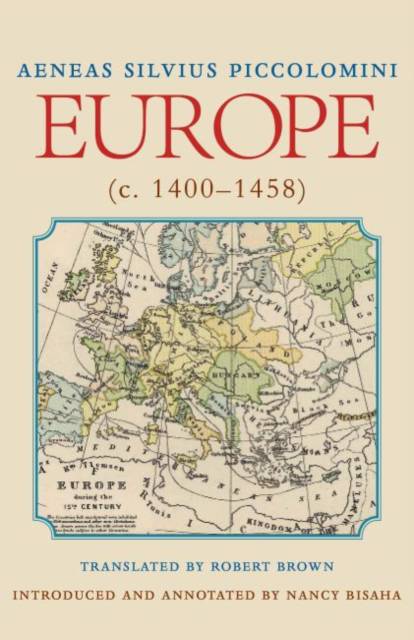
- Retrait gratuit dans votre magasin Club
- 7.000.000 titres dans notre catalogue
- Payer en toute sécurité
- Toujours un magasin près de chez vous
- Retrait gratuit dans votre magasin Club
- 7.000.0000 titres dans notre catalogue
- Payer en toute sécurité
- Toujours un magasin près de chez vous
Description
Shortly before his election in 1458 as Pope Pius II, Aeneas Silvius Piccolomini
produced a history of recent events in Europe. Europe (c. 1400-1458) provides students and scholars alike with a rich array of famous and lesser known figures and events spanning from Scandinavia to Italy and Iberia, and from Scotland to Lithuania and Greece. Aeneas focused on the reign of Holy Roman Emperor Frederick III, who began his rule in 1440, creating a frame narrow enough to allow the author to move with ease across the continent. Despite this stated focus, Aeneas makes frequent digressions into ancient and medieval history, revealing his sense of how the deeper past affected the present character of cities and regions. Among the people and events Aeneas addresses are the rivalries of German princes, struggles between Eastern Europeans and the Ottoman
Turks, including the fall of Constantinople (1453), challenges to the powerful Teutonic Order, the last battles of the Hundred Years War, dynastic wrangling in Spain, the post-schism papacy's efforts to reclaim its former dominance, and a lengthy discussion of recent politics and wars in Italy, culminating in the campaigns of Alfonso of Naples. Amidst his descriptions of powerful men, Aeneas also frequently pauses to discuss notable women, customs of the peasantry, religious beliefs of heretics and pagans, and economic issues.
This popular text circulated widely in manuscript form and was printed in several editions between the late 15th and the early 18th centuries, in Latin, German, and Italian. The present volume represents the first time this work has been translated into English, bringing its colorful narrative to the attention of a wider audience. This edition also provides extensive footnotes, an appendix of rulers, and a lengthy introduction to Aeneas's life and the context and relevance of this work.
produced a history of recent events in Europe. Europe (c. 1400-1458) provides students and scholars alike with a rich array of famous and lesser known figures and events spanning from Scandinavia to Italy and Iberia, and from Scotland to Lithuania and Greece. Aeneas focused on the reign of Holy Roman Emperor Frederick III, who began his rule in 1440, creating a frame narrow enough to allow the author to move with ease across the continent. Despite this stated focus, Aeneas makes frequent digressions into ancient and medieval history, revealing his sense of how the deeper past affected the present character of cities and regions. Among the people and events Aeneas addresses are the rivalries of German princes, struggles between Eastern Europeans and the Ottoman
Turks, including the fall of Constantinople (1453), challenges to the powerful Teutonic Order, the last battles of the Hundred Years War, dynastic wrangling in Spain, the post-schism papacy's efforts to reclaim its former dominance, and a lengthy discussion of recent politics and wars in Italy, culminating in the campaigns of Alfonso of Naples. Amidst his descriptions of powerful men, Aeneas also frequently pauses to discuss notable women, customs of the peasantry, religious beliefs of heretics and pagans, and economic issues.
This popular text circulated widely in manuscript form and was printed in several editions between the late 15th and the early 18th centuries, in Latin, German, and Italian. The present volume represents the first time this work has been translated into English, bringing its colorful narrative to the attention of a wider audience. This edition also provides extensive footnotes, an appendix of rulers, and a lengthy introduction to Aeneas's life and the context and relevance of this work.
Spécifications
Parties prenantes
- Auteur(s) :
- Traducteur(s):
- Editeur:
Contenu
- Nombre de pages :
- 344
- Langue:
- Anglais
Caractéristiques
- EAN:
- 9780813232638
- Date de parution :
- 27-08-19
- Format:
- Livre broché
- Format numérique:
- Trade paperback (VS)
- Dimensions :
- 140 mm x 216 mm
- Poids :
- 476 g

Les avis
Nous publions uniquement les avis qui respectent les conditions requises. Consultez nos conditions pour les avis.






